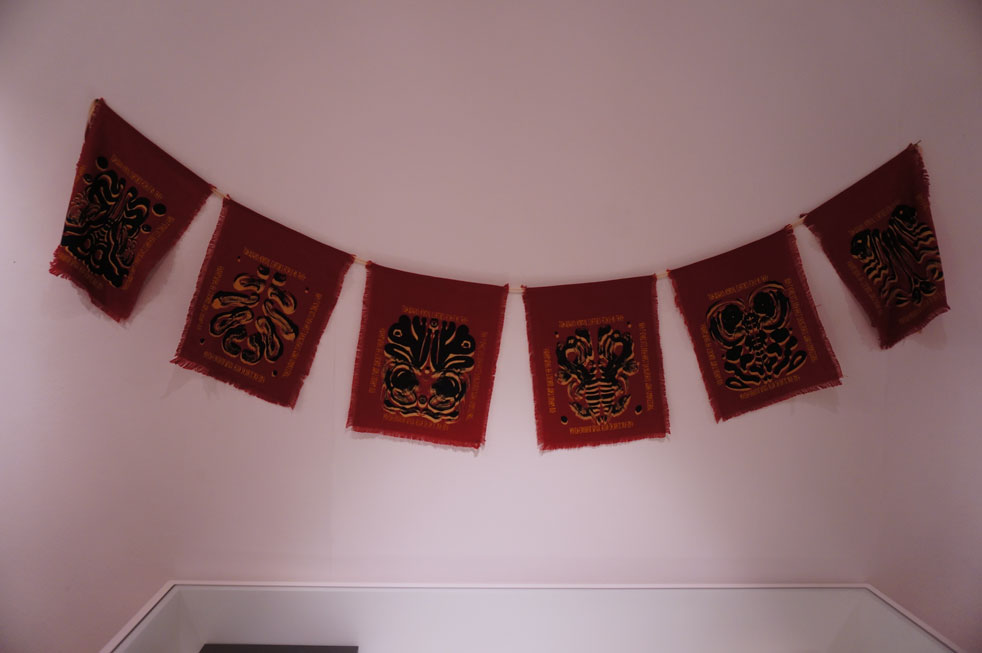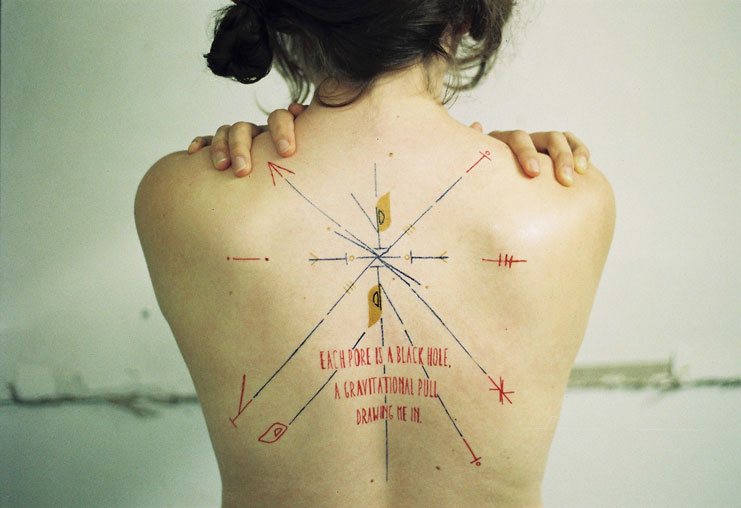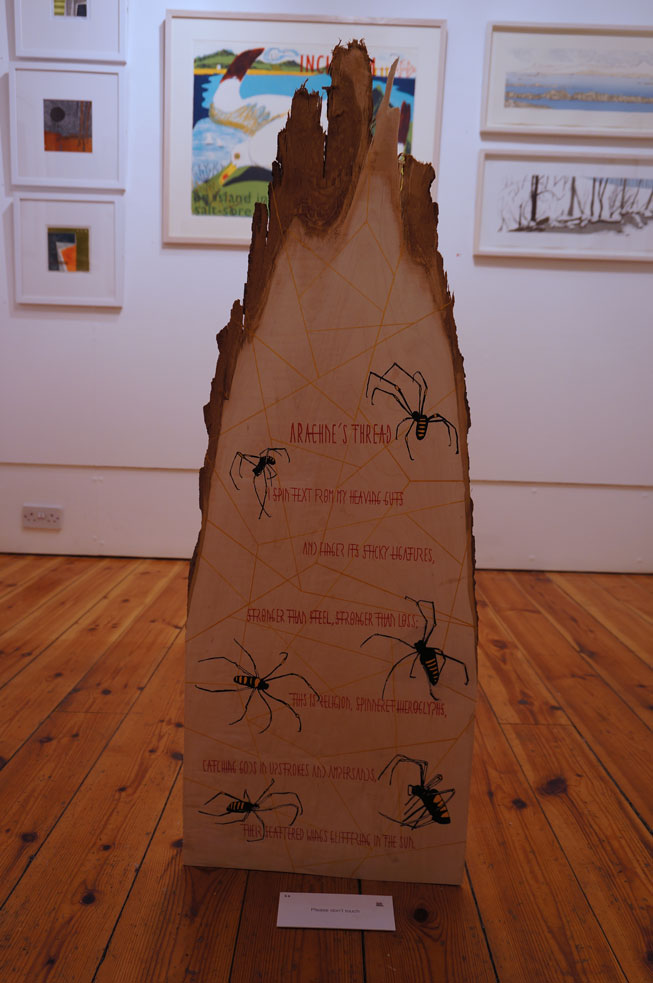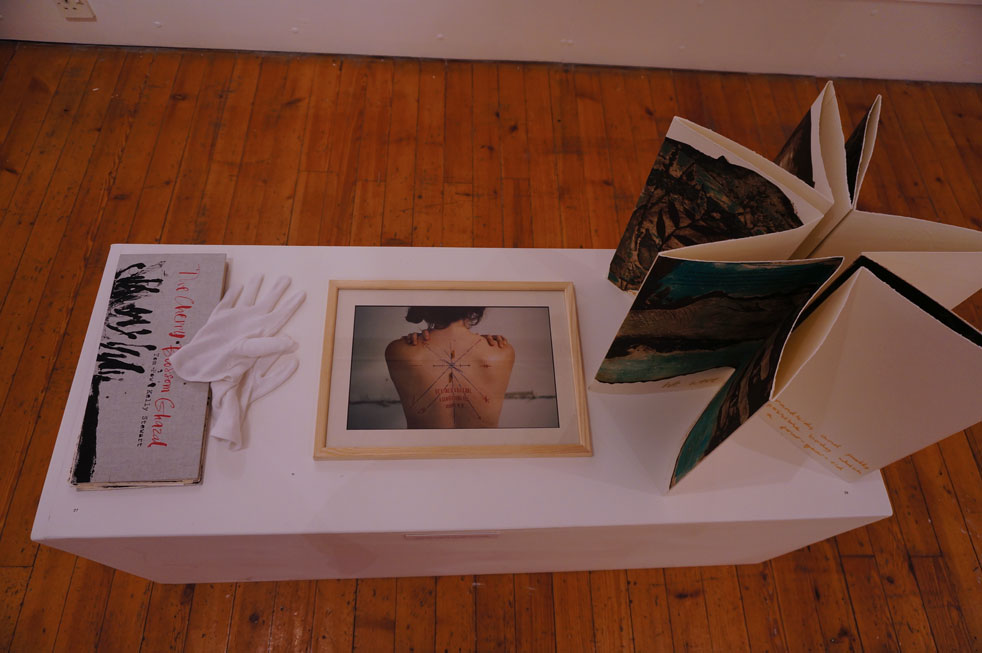The Human Animal Covers Itself in Text – Collaboration with the poet Samuel Tongue as part of the programme set up by Edinburgh Printmakers and the Scottish Poetry Library.
The photographs below are of the work at the Exhibition which ran from the 15th of November until the 21st of December 2013.
Screen Print on Norweigan Maple
 Exhortation
Exhortation
Discharge and pigment printed Linen

Skintext
35mm film photograph of screenprint on skin
Words from the exhibition booklet:
On our first meeting, Morvern and I discovered our etymologically linked obsessions: for her, screen-printing onto textiles; for me, printed texts. I had become fascinated with the eco-critical philosophical work of Jacques Derrida (another textual obsessive) and Timothy Morton, especially around the idea of writing and language as bound up with our definitions of homo sapiens and how we are somehow different and opposed to other animals. But what if these forms of signification—that seemingly belong to and constitute the human—extend and limit our cognitive and representational abilities? Morvern and I decided to work around the title The Human Animal Covers Itself in Text in order to explore these ideas and my poems became coverings, warnings, brandings, and markings across different materials and textures, including, most literally, human skin.
Our collaboration forced me to think more about the materiality of language, the glyphs that can exist beyond the page, and how the human animal must cover itself and its world in text; that textus, as cloth and writing, domesticates wilderness and is a way of making home, as in the Greek oikos, the root of eco-logy and eco-nomics. But thoughts are strings—like Arachne’s threads—and can also be used for hunting and feeding; so we worked up some warning signs here too, language become visible.
~
The translation of Samuel’s poems grew in stages, our in depth discussions on our theme and possible applications giving me a visual starting point to develop and bring to our conversation. As I studied the poems the artwork became centred around spiritual and religious symbols: the shrine or altar, the scroll, the branding and the prayer flag. In each it is a translation of an original idea; for example the Bhuddist prayer flags becoming warnings rather than messages of prayer.
Samuel gave me a new language to work with, one which links us back to the origin of writing. From this I rewrote the alphabet in different break downs of glyph shapes, creating unreadable fonts and sigils based on old texts. To read the words I had to bring the shapes back to a recognisable place, but in the mandala I could still use these forms to read the words in a round.
Titles became important in my understanding of the poems and I drew significance from the words that titled the work, they are a key to translating the meaning in the pieces and our title for the works The Human Animal Covers Itself In Text is a key to each.
Morvern Odling and Samuel Tongue, 2013

